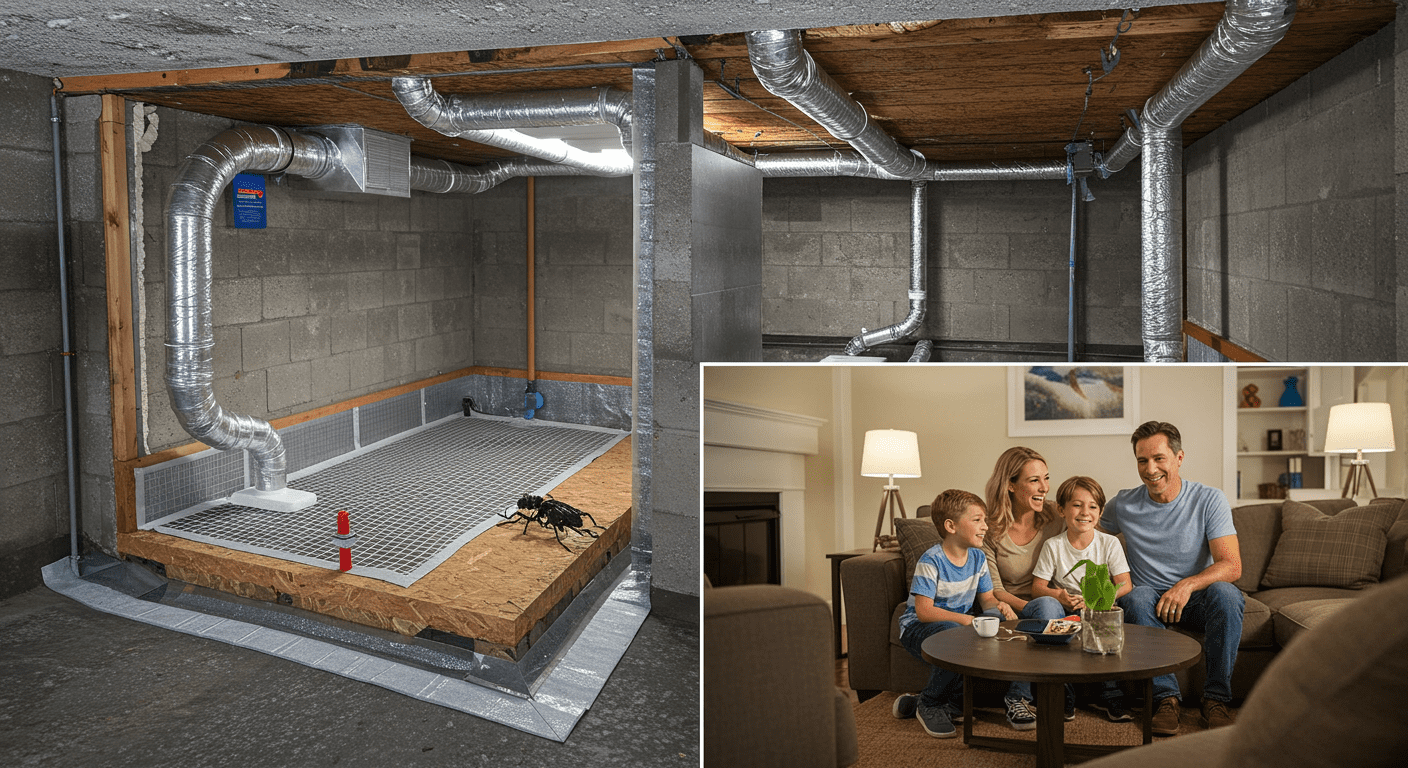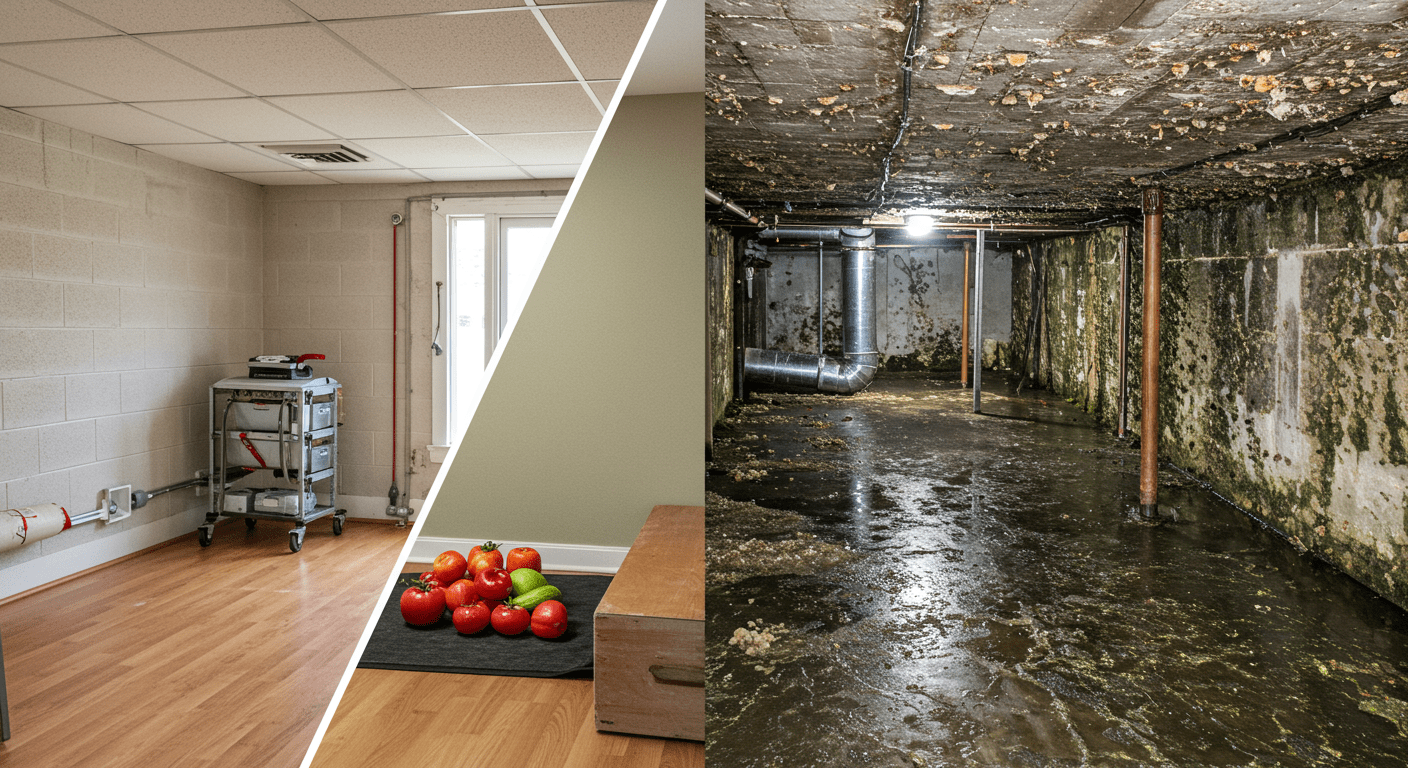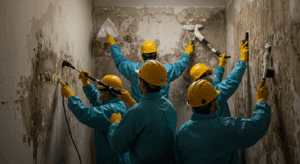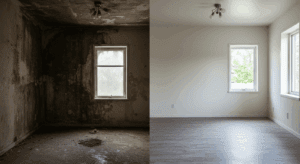Crawl space encapsulation is a home improvement strategy that has gained significant attention in recent years. While it offers numerous benefits, it also comes with its own set of challenges. In this article, we’ll explore the pros and cons of crawl space encapsulation to help you determine if it’s the right choice for your home.
What is Crawl Space Encapsulation?
Definition and Overview
Crawl space encapsulation involves sealing off the crawl space beneath your home to create a controlled environment. This process typically includes installing a vapor barrier, insulation, and sometimes a dehumidifier to keep moisture, pests, and other external elements at bay. Encapsulation is particularly popular in areas with high humidity levels, as it helps prevent mold and structural damage.
The Encapsulation Process
The process begins with cleaning the crawl space to remove debris, mold, and pests. Next, a heavy-duty vapor barrier is installed to cover the floors and walls, followed by sealing any vents or openings. Insulation may also be added to improve energy efficiency. Finally, a dehumidifier is often installed to maintain optimal humidity levels. This comprehensive approach ensures a dry and healthy crawl space.
Benefits of Crawl Space Encapsulation
Pest Prevention
One of the primary benefits of crawl space encapsulation is its ability to deter pests. By sealing off entry points and creating a controlled environment, you can significantly reduce the risk of infestations from rodents, termites, and other pests. This not only protects your home but also enhances your family’s comfort and safety.
Moisture Control and Health Benefits
Excess moisture in crawl spaces can lead to mold growth, which poses serious health risks such as allergies and respiratory issues. Encapsulation effectively controls moisture levels, preventing mold and mildew. This creates a healthier living environment and reduces the likelihood of costly repairs due to water damage.
Energy Efficiency and Cost Savings
Encapsulation improves your home’s energy efficiency by reducing heat loss and minimizing the workload on your HVAC system. This translates to lower energy bills and a more sustainable home. Over time, the savings on utility costs can offset the initial investment in encapsulation.
Increased Home Value and Usability
A well-maintained crawl space can increase your home’s resale value. Potential buyers are often willing to pay a premium for homes with encapsulated crawl spaces due to the added benefits of energy efficiency and reduced maintenance. Additionally, encapsulation can make the crawl space usable for storage, further enhancing its value.

Drawbacks of Crawl Space Encapsulation
Cost Considerations
One of the most significant drawbacks is the cost. Crawl space encapsulation can be expensive, with prices ranging from $5,000 to $15,000 depending on the size and condition of the crawl space. While the long-term benefits often justify the expense, the upfront cost can be a barrier for many homeowners.
Maintenance and Inspection Requirements
Encapsulation requires regular maintenance to ensure its effectiveness. This includes inspecting the vapor barrier for tears, checking the dehumidifier, and monitoring humidity levels. Neglecting these tasks can compromise the system’s performance and lead to additional costs.
Potential HVAC System Adjustments
In some cases, encapsulation may require modifications to your HVAC system to ensure proper ventilation and air circulation. These adjustments can add to the overall cost and complexity of the project.
Access and Storage Limitations
While encapsulation can make the crawl space more usable, it may also limit access for repairs or inspections. The added barriers and insulation can make it challenging for contractors to work in the space, potentially increasing labor costs for future repairs.
Is Crawl Space Encapsulation Right for You?
Factors to Consider Before Encapsulation
Before deciding on encapsulation, consider factors such as your home’s location, climate, and existing crawl space conditions. Homes in humid climates or areas prone to flooding are more likely to benefit from encapsulation. Additionally, assess your budget and long-term goals to determine if the investment aligns with your needs.
Consulting with Professionals
It’s essential to consult with experienced professionals who can assess your crawl space and recommend the best course of action. They can provide a detailed estimate and explain the potential benefits and drawbacks specific to your home.
Long-Term Benefits vs. Initial Costs
While the upfront cost of encapsulation can be high, the long-term benefits often outweigh the expense. Improved energy efficiency, enhanced home value, and a healthier living environment are just a few of the advantages that make encapsulation a worthwhile investment for many homeowners.
For more information on related topics, check out our guide on Expert Flood Cleanup Services in Plainfield, NJ or learn about Black Mold After Water Damage.
In conclusion, crawl space encapsulation offers a range of benefits, from improved energy efficiency to enhanced home value. However, it’s essential to weigh these advantages against the potential drawbacks, such as cost and maintenance requirements. By carefully considering your needs and consulting with professionals, you can make an informed decision that benefits your home and family in the long run.



